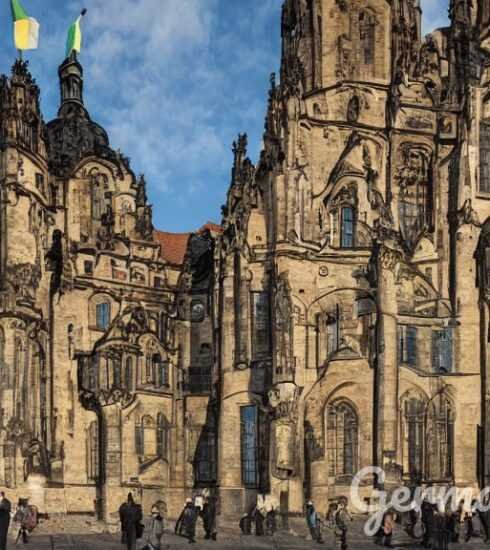Unveiling the Depths of German Cultural Epochs: A Thrilling Journey beyond the Mainstream Heritage
Unmasking the Shadows: A Riveting Journey into Germany’s Lesser Explored Cultural Epochs invites readers into the rich tapestry of German history, diving beyond well-tread pages of the Third Reich and World War II, and exploring deeper, more elusive periods of German cultural heritage. While parts of Germany’s history have been written, rewritten, dissected and widely studied, there remain epochs shrouded in mystery. By traversing these lesser-known passages of time, we reveal a full-bodied appreciation for the nation’s cultural legacy.
The Dwelling Shadows: Pre-Roman Times and Indigenous Tribes
Germany’s history doesn’t begin with the Romans: it goes deeper into a time, still shrouded in mystery, when tribes wandered through icy landscapes and erected monumental henges under starry skies. The Lusatians, the Germanic tribes, and the Celts, among others, all bequeathed Germany with a rich cultural heritage, much of which is yet to be discovered.
- The Lusatians: The Lusatians were known for their unique burial practices, such as cremanging their dead and placing the remains in urns, and their fortified settlements.
- The Germanic Tribes: Known to be fierce warriors, these tribes cherished their freedom and fiercely resisted Roman advancement.
- The Celts: Highly skilled in metal-working, the Celts contributed significantly to art and culture.

Learn more about these tribes and their influence on contemporary German culture in Germany’s Cultural Mysteries.
The Silence of the Sculptures: The Merovingian Dynasty
The Merovingians, a Salian Frankish dynasty, reigned over a region largely encompassing present-day France and Germany from the 5th to 8th century. Although relatively scantly recorded, this dynasty, being among the first to adopt Christianity, had a profound influence on German religious culture. For example, Saint Boniface, the Patron Saint of Germany, is of Merovingian origin.
Mysterious Merovingian artefacts also survive, including intricately crafted gold jewellery, ornate weapons, and cryptic carvings. Among the most captivating are the silent stone ‘stelae’ – sculpture stones representing humans or animals, that were commonly used as grave markings. Their enigmatic smiles and surreal body proportions convey an eerie sense of unconventionality.

The Abandoned Legacies: The Hanseatic League
The Hanseatic League was a powerful economic and defensive confederation of merchant guilds and market towns that dominated trade throughout much of Northern Europe from the 15th to the 19th century. This epoch is often forgotten in the grand scheme of German history, but their impact can still be seen in the majestic Gothic architecture of cities like Lübeck and Bremen.
By establishing trade routes and common laws, the Hanseatic League forged economic stability and a unique cultural identity. They played a pivotal role in shaping the German language by promoting Middle Low German as the Lingua Franca of the Baltic Sea.
Examine the role of the Hanseatic League in the development of German society in German Heritage.

Gilded Shadows: The Weimar Republic
The Weimar Republic, named after the city of Weimar where its constitutional assembly took place, was born from the ashes of the First World War. A beacon of freedom, democracy, and progressiveness, it was a stark contrast to the monarchical system that preceded it.
This period witnessed the rise of avant-garde arts, scientific discovery, revolutionary ideas, alongside political instability and economic hardship. Weimar represented the struggle and aspiration of the German nation to reinvent itself. The era’s legacy is still evident in German political and cultural infrastructure.
Conclusion:
Unmasking the Shadows: A Riveting Journey into Germany’s Lesser Explored Cultural Epochs, we realize that Germany’s vast and diverse past warrants exploration beyond its infamous 20th century. Its cultural heritage is a rich, complex tapestry woven through millenia, filled with dominant shades of celebrated periods, but also with the subtle nuances of the lesser-known epochs. Every shadowy corner of this journey offers an opportunity for discovery and a richer understanding of what makes up the vibrant, resilient, and most intriguing culture that is Germany’s today.






